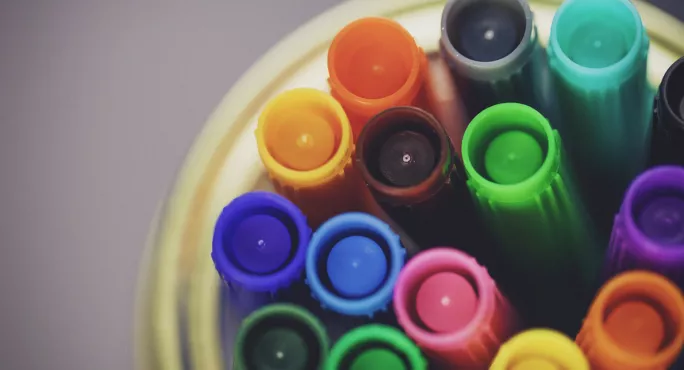Many years ago, when I began my teaching career, I must have read something about not using a red pen to mark students’ work, because right from the start I decided I would mark in green.
I was never wholly convinced about the “red pen is too aggressive” idea, but I figured there might be something in it. And, besides, I felt like it would help me to forge my teaching persona. I was going to be the kind of teacher who marked in green.
The 20-year-long relationship with my green biro was brought to an end a few years back, when the current fad for “rainbow marking”, using different coloured pens for different tasks, hit the scene.
I was resistant to the change. I held out for a year or so, until I had a blazing row with my line manager (I say blazing row, but I’m the kind of teacher who marks with a green pen, remember, so let’s just say things got a bit testy). In the end, she said she’d buy me a pack of purple pens to mark with, and I acquiesced.
Felt-tip pen totalitarianism
I’m a supply teacher these days, and whenever a student asks me if they have to complete a particular task in green (or purple or pink: some schools have gone absolutely nuts for the whole idea), I always give the same reply: I don’t care what colour you do the work in, as long as you do the work.
Some students look a bit shocked, then worried, and then carry on with the green pen, anyway, assuming I’m a madman. With others you can see a sense of relief - they have suddenly been freed from the tyranny of felt-tip totalitarianism.
These emancipated students will often follow up their initial question with, “So why do they tell us to do it in green then?”
Good question.
The real answer has little to do with helping the students, and more to do with monitoring the staff. Think about it. The standard line is that having children correct their work in a different colour means that they can see where they’re making progress.
Forcing an arbitrary regime on students
But surely the important thing is to make the improvements at all. They know they’ve corrected their work because...they’ve just done it. They won’t be looking down at the new, improved paragraph and thinking, “Well, how the hell did that get there?”
It’s the same if they’re peer marking. They can see someone else has made some suggestions because: a) It’s in different handwriting, and b) it wasn’t there a minute ago.
I’m all in favour of having students colour-code their work to facilitate revision - key concepts in one colour, evaluation points in another, and so forth. But a major part of the value in that strategy is letting students construct their own methods, not forcing some arbitrary regime on them. That’s just annoying.
I don’t think there’s much benefit to teachers, either. After all, we managed fine for years without looking at multicoloured pieces of work. Teachers can see if students are improving a piece of work, because when told to do so in a feedback session they’re either writing in their books or they’re chatting to their mates.
If you’re looking back at a student’s work after you’ve marked it, then their corrections will be written underneath your comments. It doesn’t need to be written in green to see where it is on the page.
The path of assessment lunacy
So what’s the real reason teachers and students have been corralled down this path of assessment lunacy?
I’d suggest it’s largely for the benefit of whoever’s checking up on the classroom teacher: the deputy on the learning walk, or the faculty head scrutinising the books.
It’s part of a pernicious trend that forces teachers not just to teach, but to prove that they’ve been teaching. We now exist in some dystopian truth-decayed reality where, if you can’t produce the evidence that you’ve taught something (and marked it, and triple-marked it), it never happened.
What about trust? What about recognising a teacher’s professionalism?
So join with me, and throw off the shackles of stationery despotism. Next time a student asks what colour pen to use, look them in the eye and say, “My child, the choice is yours.” Now, that’s a lesson worth learning.
Callum Jacobs is a supply teacher in the UK





